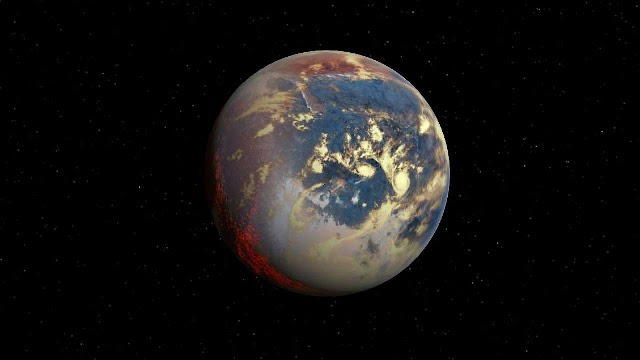Last week, NASA revealed the first full-color photographs snapped by its $10 billion telescope, and the results were astonishing.
While it is easy to be stunned by the clarity of the photos that the recently activated James Webb telescope (JWST) is capable of capturing. The telescope is a lot more powerful than just taking minf0blowing photos, its so powerful that it was able to detect water on a very faraway exoplanet.
Wasp-96 b, one of the five objects that the telescope first focused on, is the exoplanet targeted by JWST. Where James Webb shot the Carina Nebula and other objects, however, Wasp-96 b was studied as well. And it did so quite well. In fact, the research on exoplanet Wasp-96 b was so comprehensive that scientists detected water on it. Wasp-96 b is located 1,150 light-years away in the constellation of Phoenix.
NASA utilized the Near-Infrared Imager and Slitless Spectrograph (NIRISS) to examine the composition of the exoplanet's atmosphere in detail. To do this, scientists concentrated on establishing a transmission spectrum. To do this, the scientists contrasted starlight filtered by a planet's atmosphere as it passes across a star to unfiltered starlight measured when the planet is in close proximity to a star.
According to NASA, each of the 141 data points on the graph it developed (shown in the figure above) represents the quantity of a certain wavelength of light that is obstructed and absorbed by the planet's atmosphere. By looking at this data, NASA is able to learn more about the exoplanet’s nature. This includes the fact that this exoplanet has water.
Webb's finding of water in an exoplanet's atmosphere is just one example of this space telescope's capabilities. In 2013, Hubble first identified water on an extrasolar planet. However, because of Webb's improvements, the telescope is now able to detect water much more precisely. As Webb digs further into exoplanets, it is impossible to predict what scientists may discover.
In the next years, NASA has a full schedule of scientific missions for Webb to accomplish. One of these missions will examine the black hole at the core of our galaxy in more detail. We have already acquired a photograph of the black hole in the Milky Way. However, if we could learn more about it and other black holes, we may have a deeper understanding of these fascinating cosmic entities.
And now that Webb can detect water on an exoplanet, we have a greater possibility of discovering an exoplanet similar to Earth that may host life.
Reference(s): NASA


